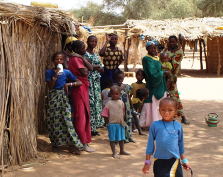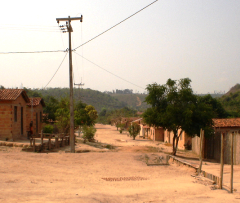Bringing Electricity to Rural Senegal
 IFC and the World Bank are helping light up almost 20,000 rural households, and several schools and health centers in Senegal by supporting a unique initiative that will bring electricity to rural parts of this West African country.
IFC and the World Bank are helping light up almost 20,000 rural households, and several schools and health centers in Senegal by supporting a unique initiative that will bring electricity to rural parts of this West African country.
This project was first conceived following the recommendations of a Country Framework Report supported by PPIAF in 2002. The overall objective of the Rural Electrification Program (REP) was to increase coverage from 14% in 2005 to 50% by 2012 (around 200,000 new connections in 11 concessions).
PPIAF’s Upstream Work
Since 2000, PPIAF has been providing technical assistance to the Government of Senegal to support the development of private sector participation in Senegal’s infrastructure sectors, including the electricity sector, and to strengthen the capacity of the Electricity Sector Regulatory Commission (CRSE).
PPIAF also co-sponsored the creation of the African Forum for Utility Regulation (AFUR) to promote regulatory cooperation among African utility regulators.
 The Country Framework Report
The Country Framework Report
The Country Framework Report (CFR) contained several recommendations:
(a) To direct concessional financing towards poverty-alleviation components. The Rural Electrification Program (REP) aims to bring electricity to poor rural areas and includes subsidies from international donors (African Development Bank, France’s Development Agency AFD, Germany’s KfW, and World Bank) to reduce up-front installation costs.
(b) To introduce more competition in the infrastructure sector. The REP concessions are competitively awarded.
(c) To define pricing systems for cost recovery that reconcile economic and social objectives. Tariffs for rural concessions were set at levels consistent with the socioeconomic conditions of the target customers, their consumption patterns and capacity to pay.
(d) To achieve universal coverage of electricity services. The REP has the same objective.
(e) To enable the CRSE to become fully operational. Today, the CRSE is fully operational and has a good track-record.
Downstream
Based on the CFR, the REP recommended that the country be divided into 11 electricity concessions. The first concession of Saint-Louis-Dagana-Podor in the northern part of the country was awarded to Office National de l’Electricité (ONE), Morocco’s electricity utility. Total project costs comprise a mix of equity, debt, and subsidies. Subsidies representing around 30% of the financing are provided by the World Bank, including a US$1.1 million grant from the GEF to support solar technology in 5,719 new connections (29% of the total).
In January 2010, IFC executed an agreement with ONE to partner in this venture and contribute 19.9% of the total capital required by the project.

